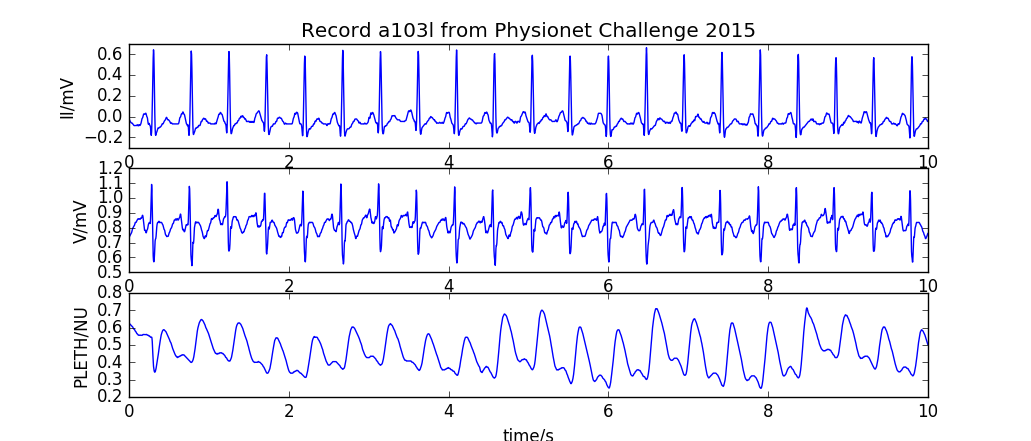A Python-native package for reading, writing, processing, and plotting physiologic signal and annotation data. The core I/O functionality is based on the Waveform Database (WFDB) specifications.
This package is heavily inspired by the original WFDB Software Package, and initially aimed to replicate many of its command-line APIs. However, the projects are independent, and there is no promise of consistency between the two, beyond each package adhering to the core specifications.
See the documentation site for the public APIs.
See the demo.ipynb notebook file for example use cases.
The distribution is hosted on PyPI at: https://pypi.python.org/pypi/wfdb/. The package can be directly installed from PyPI using pip:
pip install wfdbOn some less-common systems, you may need to install libsndfile separately. See the soundfile installation notes for more information.
The development version is hosted at: https://github.com/MIT-LCP/wfdb-python. This repository also contains demo scripts and example data. To install the development version, clone or download the repository, navigate to the base directory, and run:
pip install .If you intend to make changes to the repository, you can install additional packages that are useful for development by running:
pip install ".[dev]"Please see the DEVELOPING.md document for contribution/development instructions.
For guidance on creating a new release, see: https://github.com/MIT-LCP/wfdb-python/blob/main/DEVELOPING.md#creating-distributions
When using this resource, please cite the software publication on PhysioNet.



